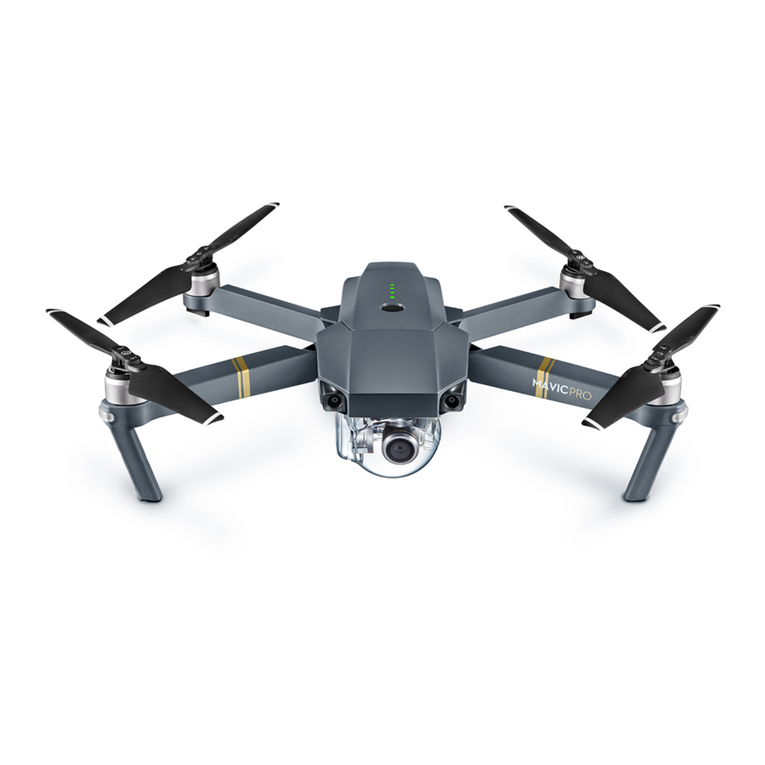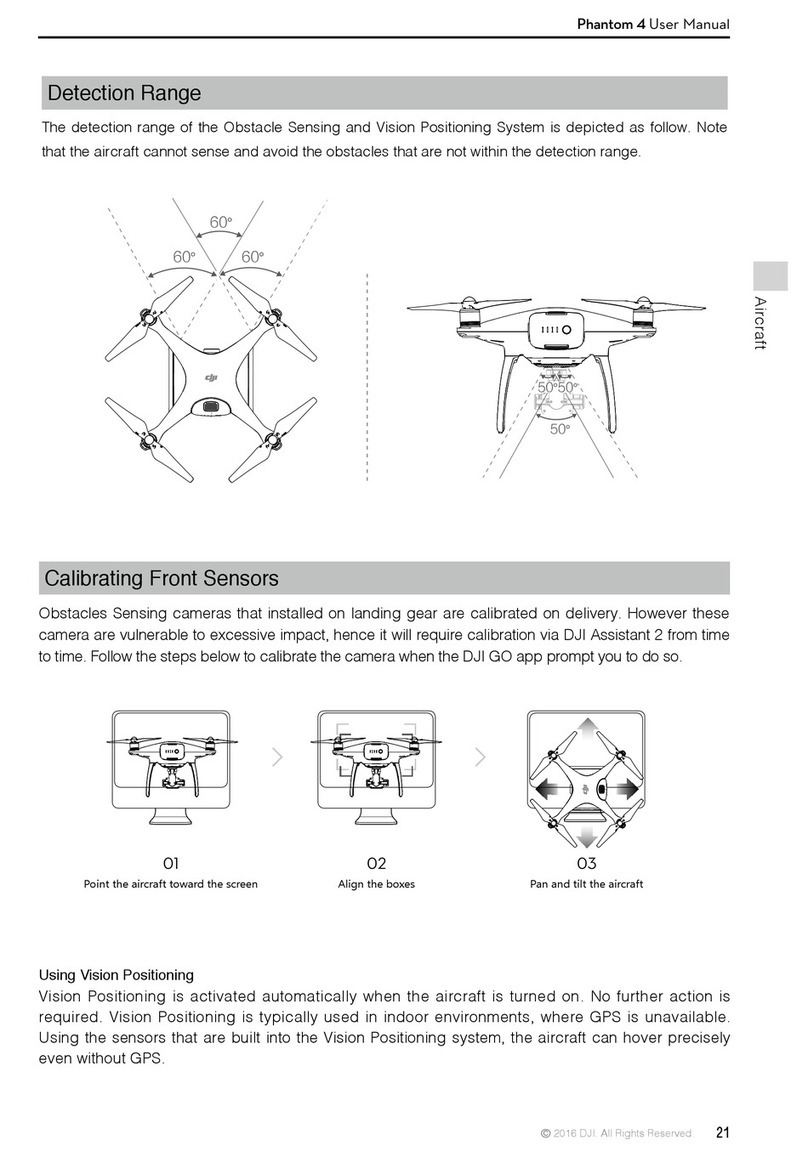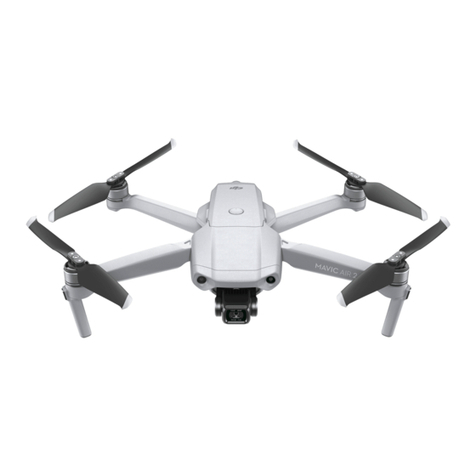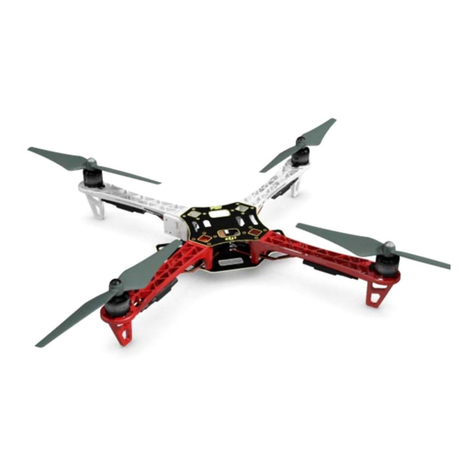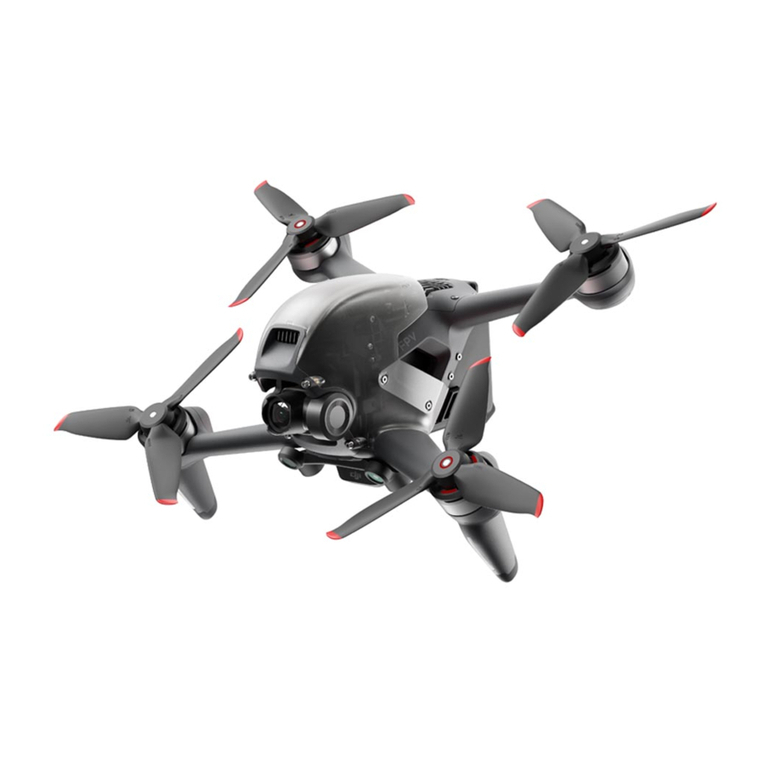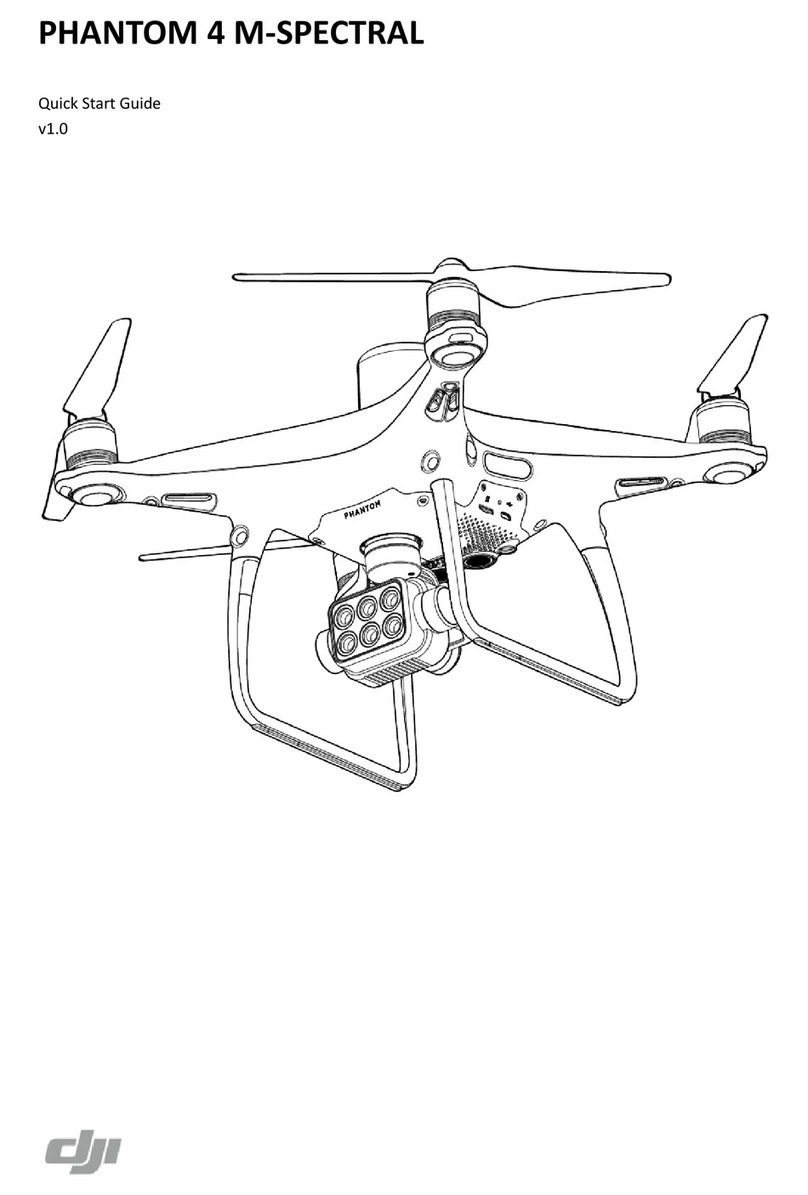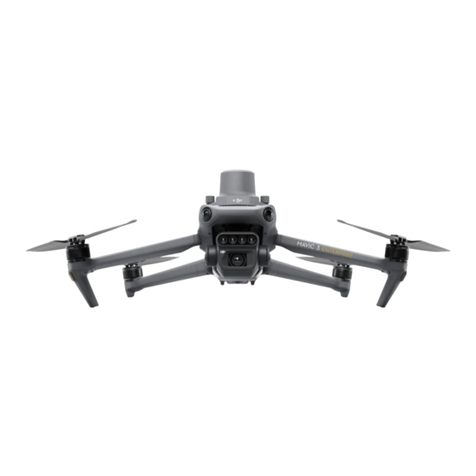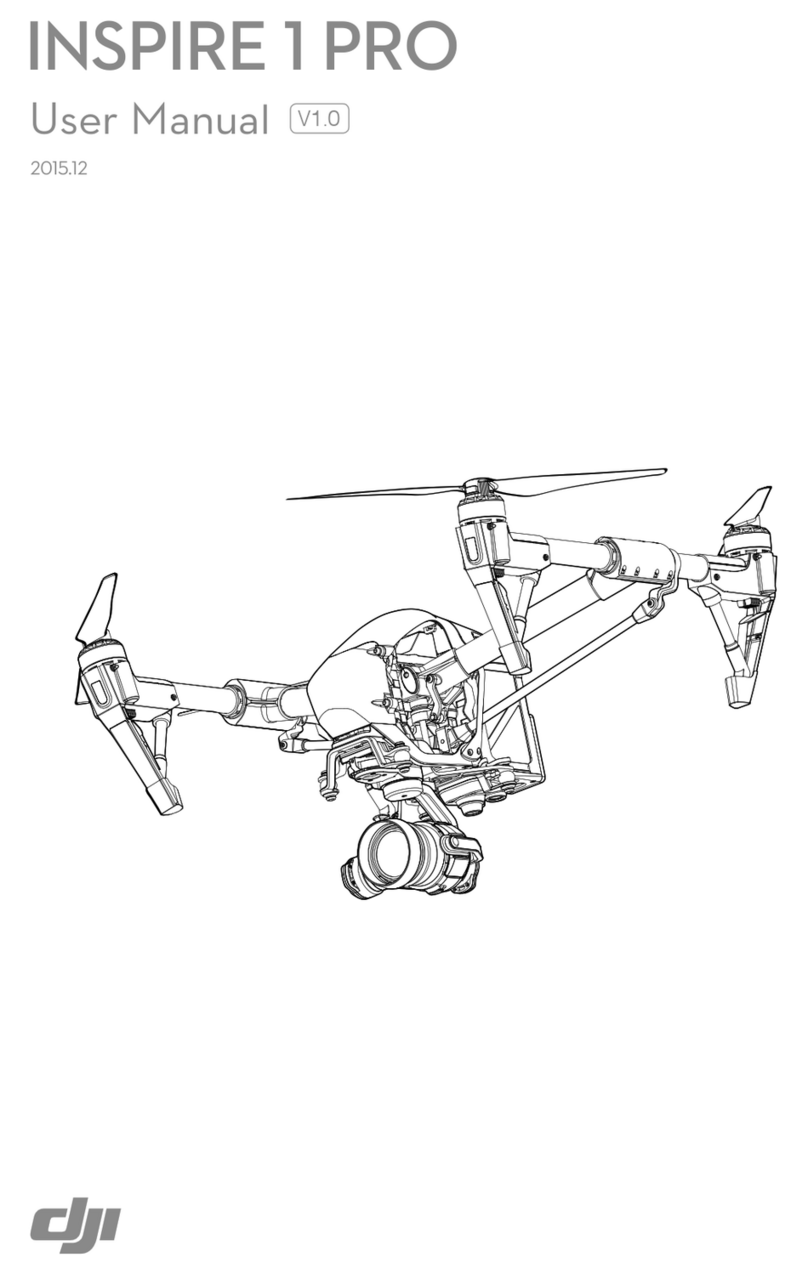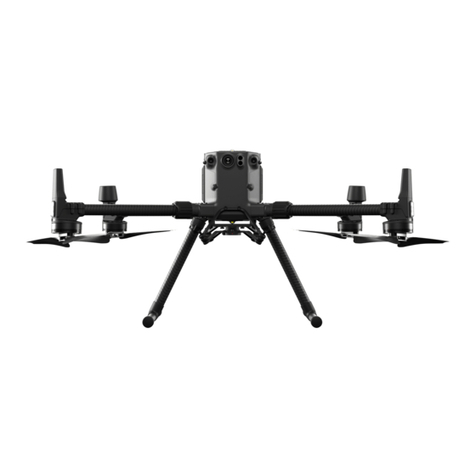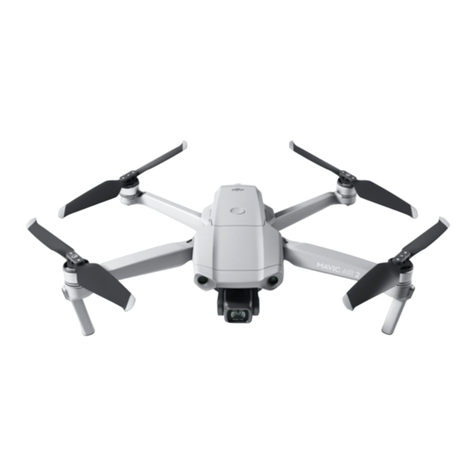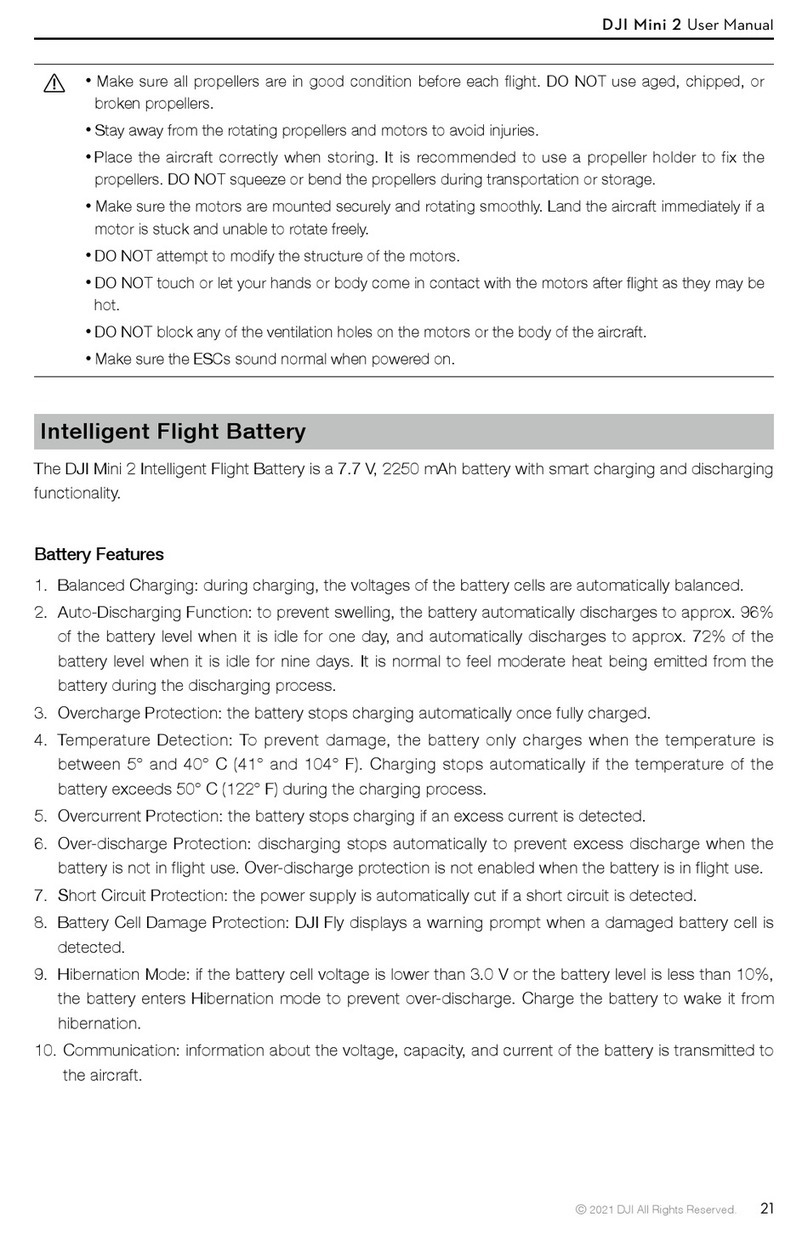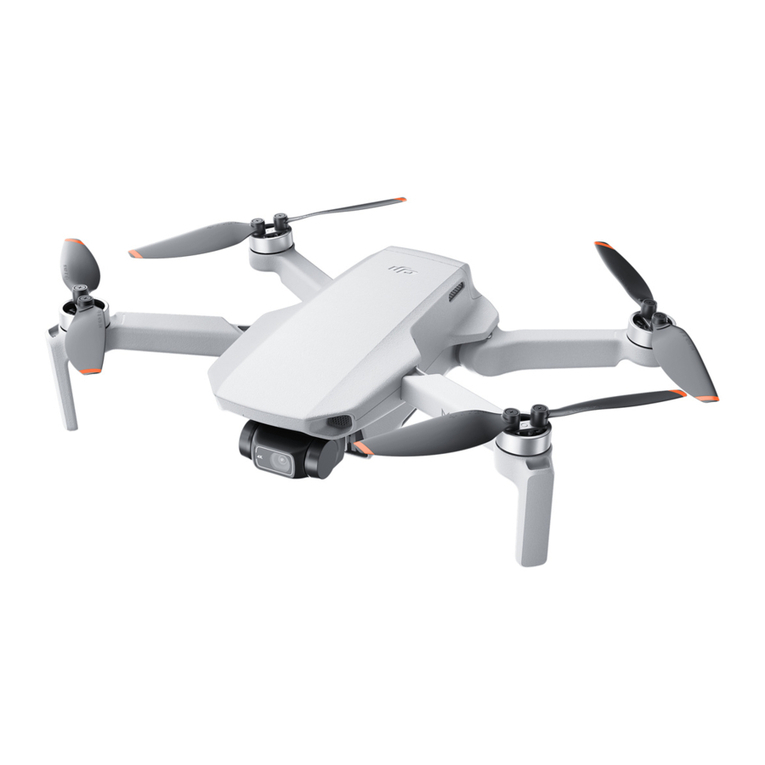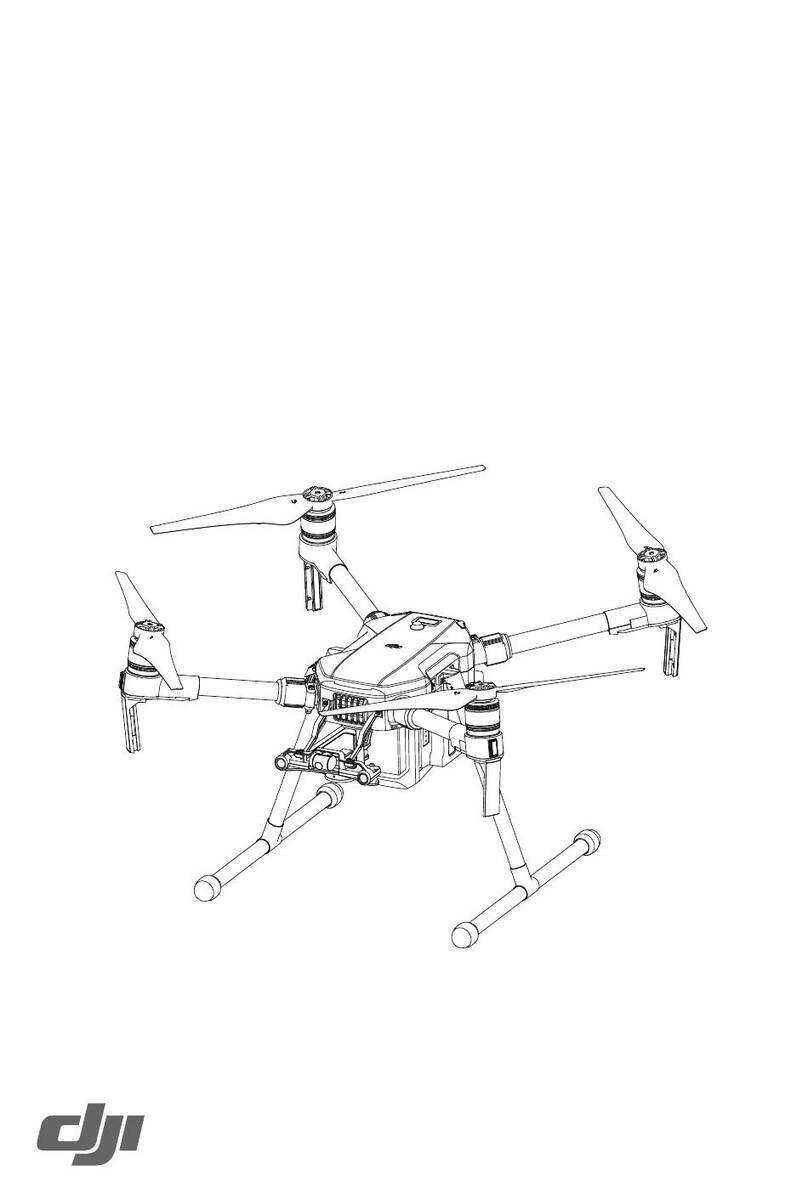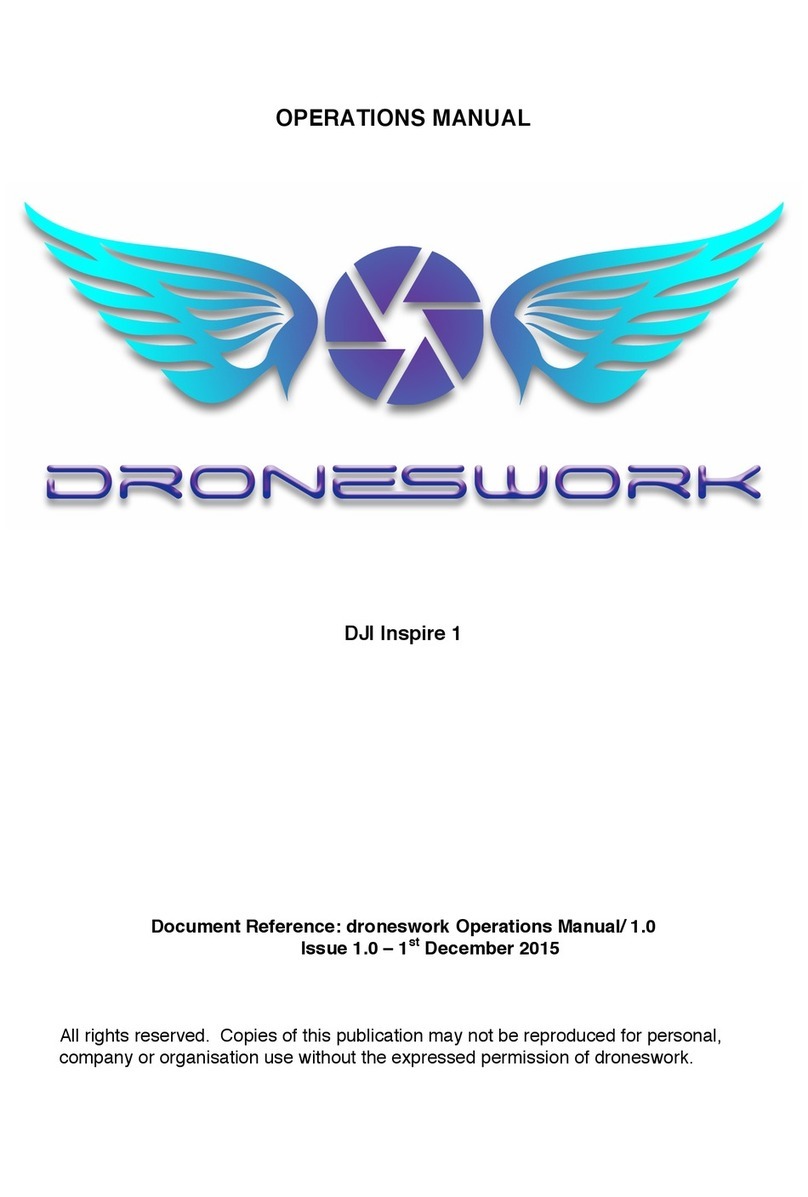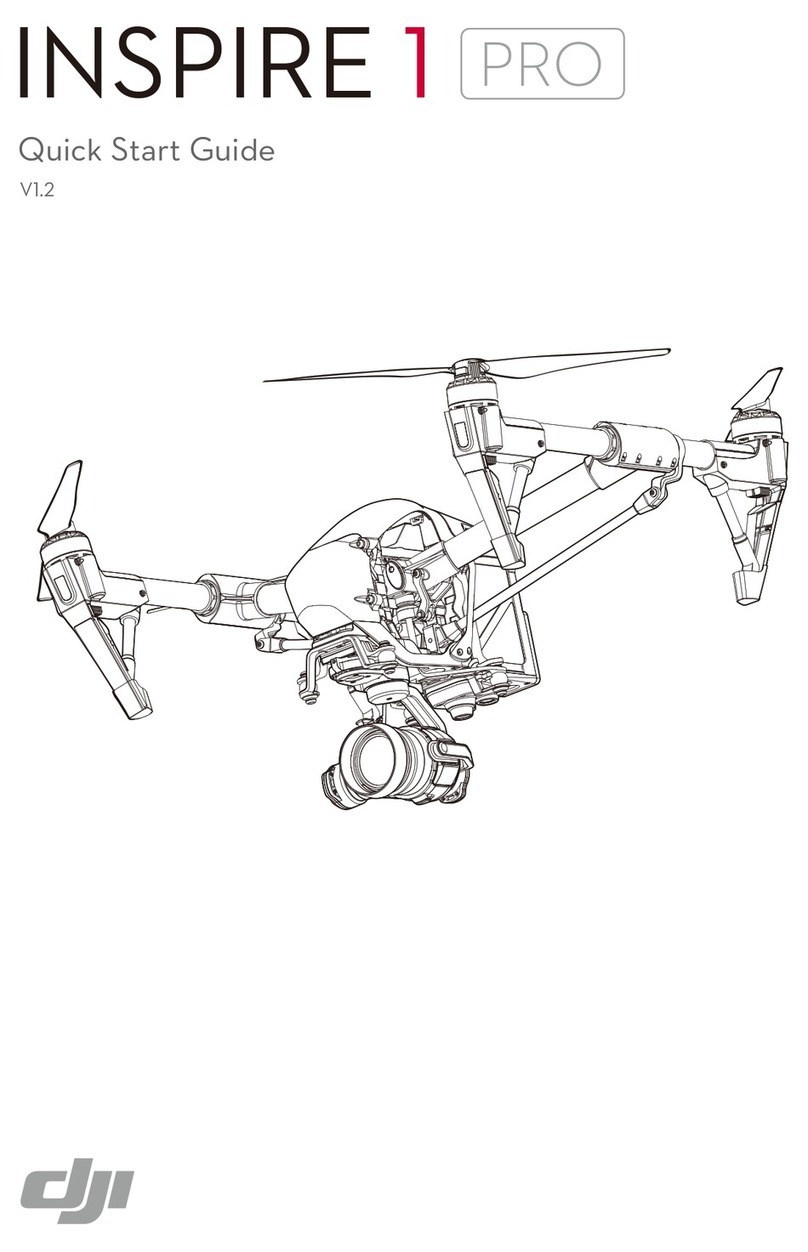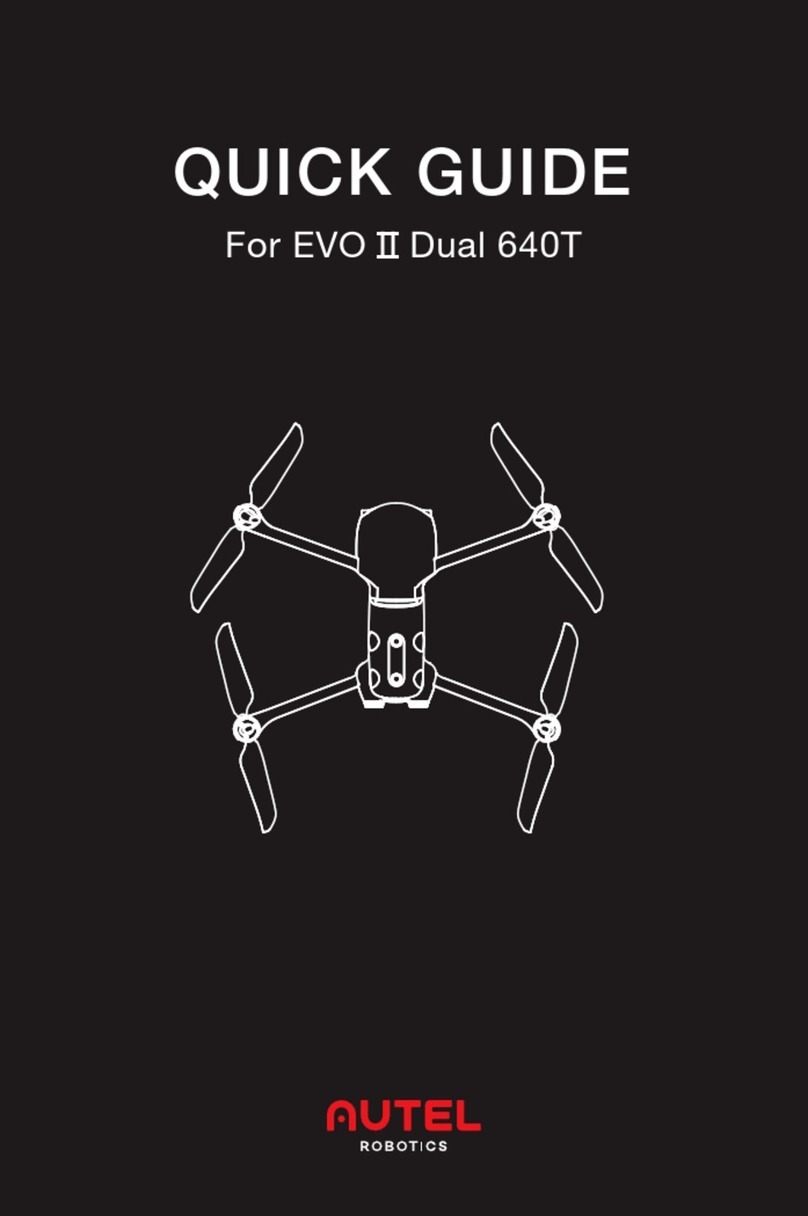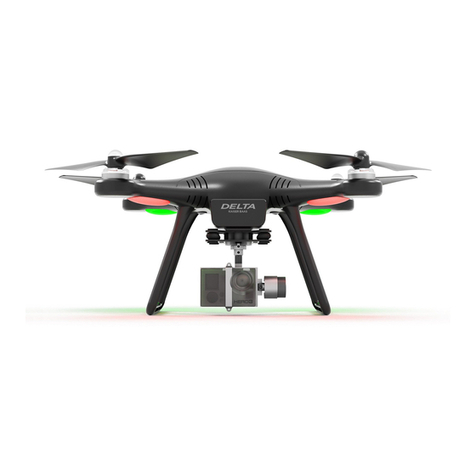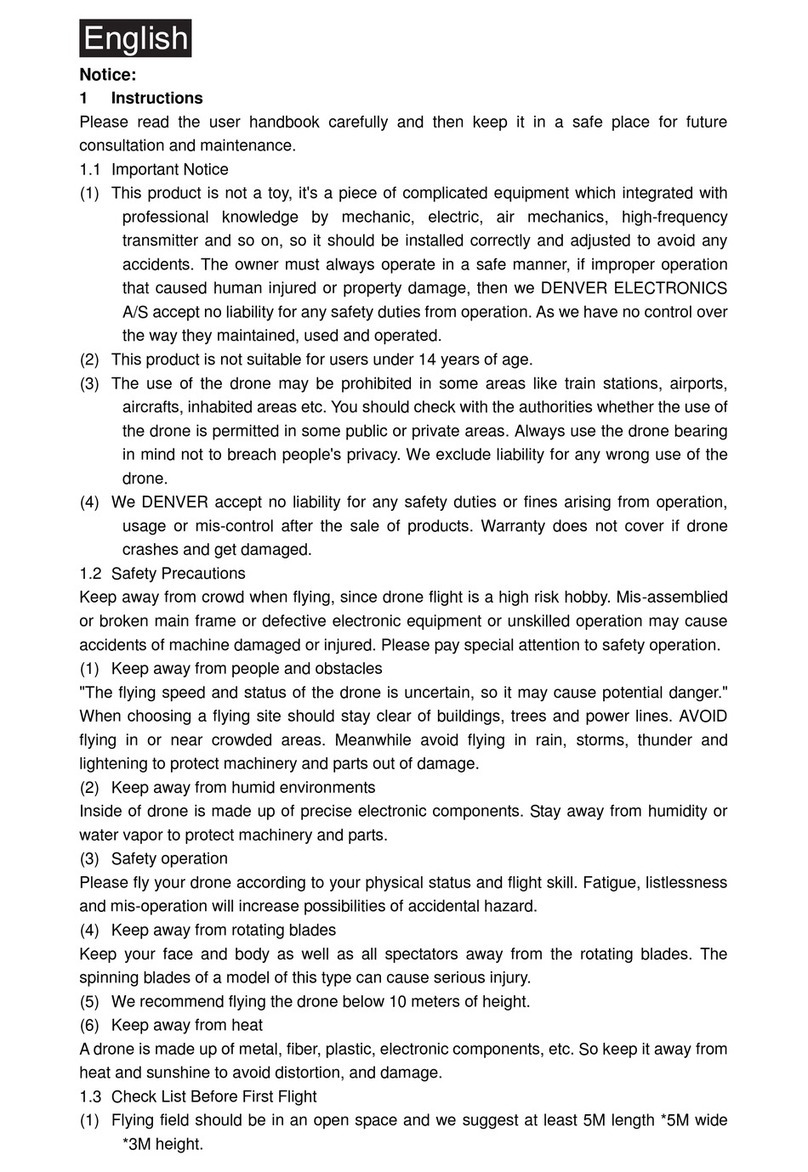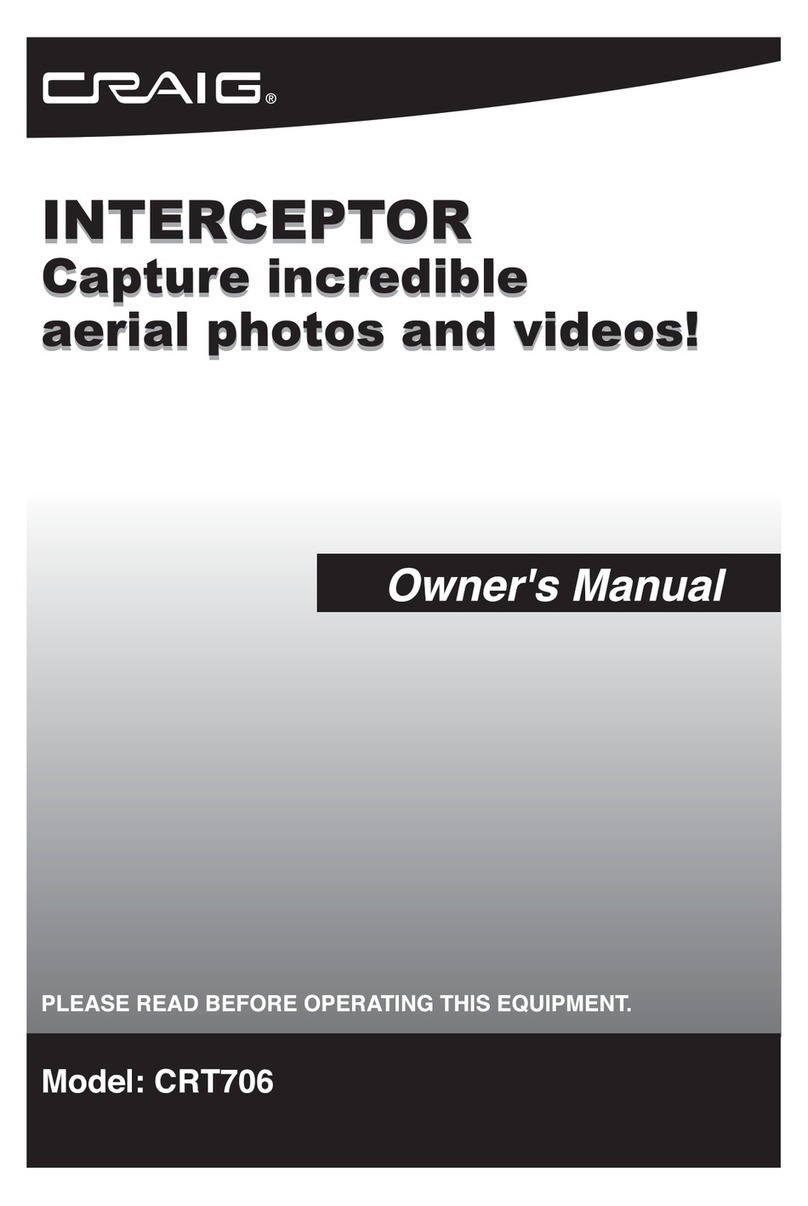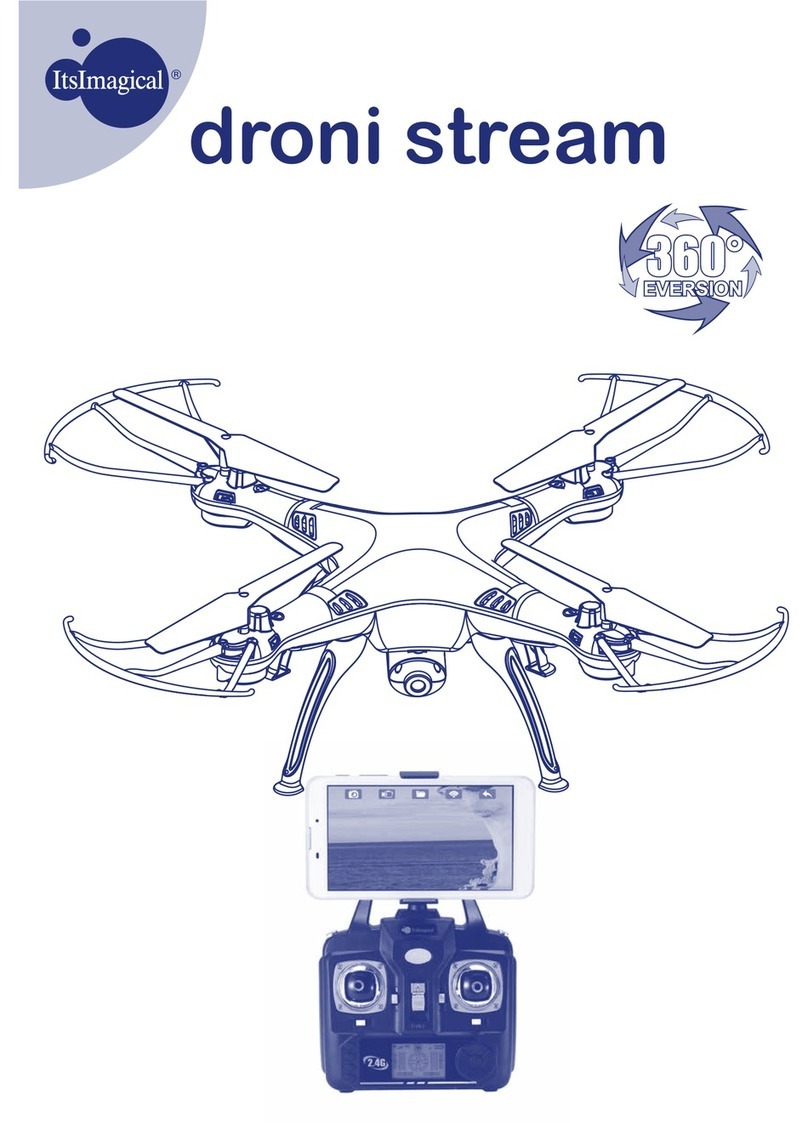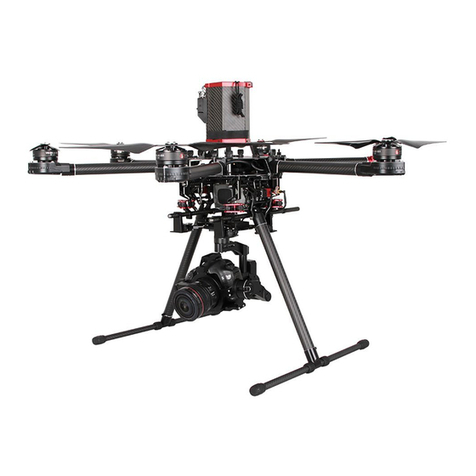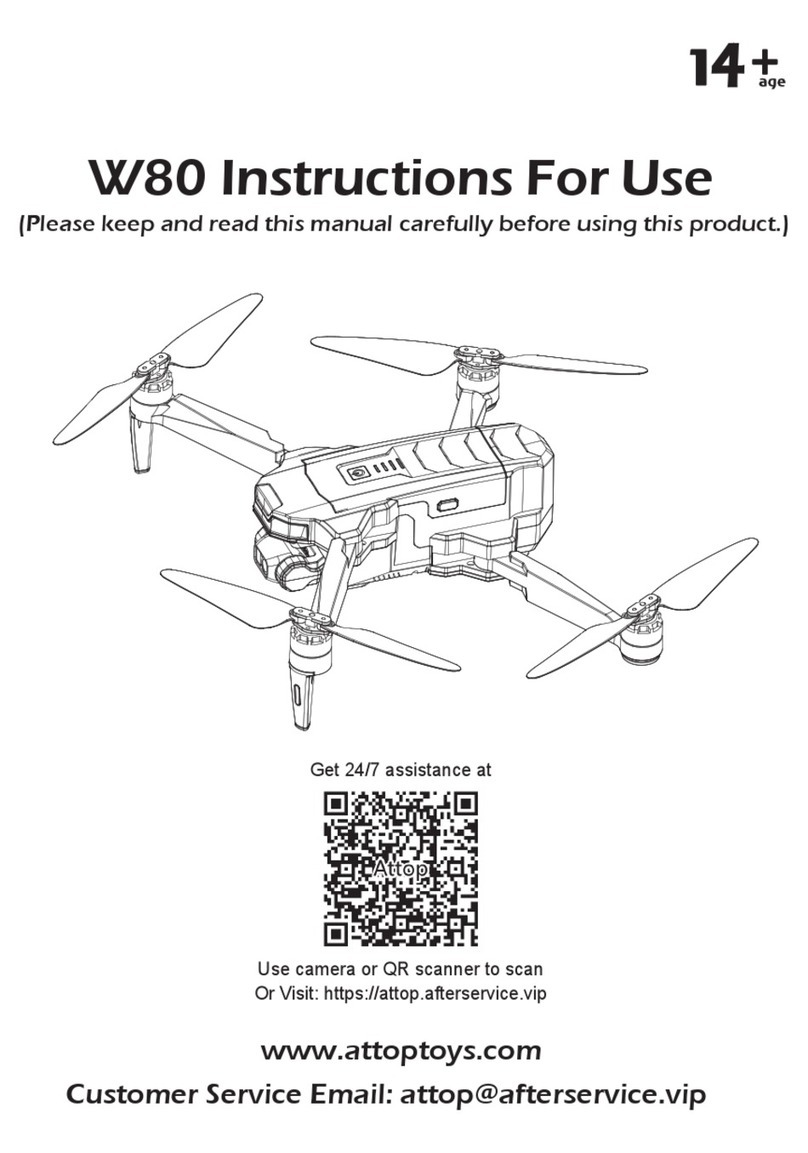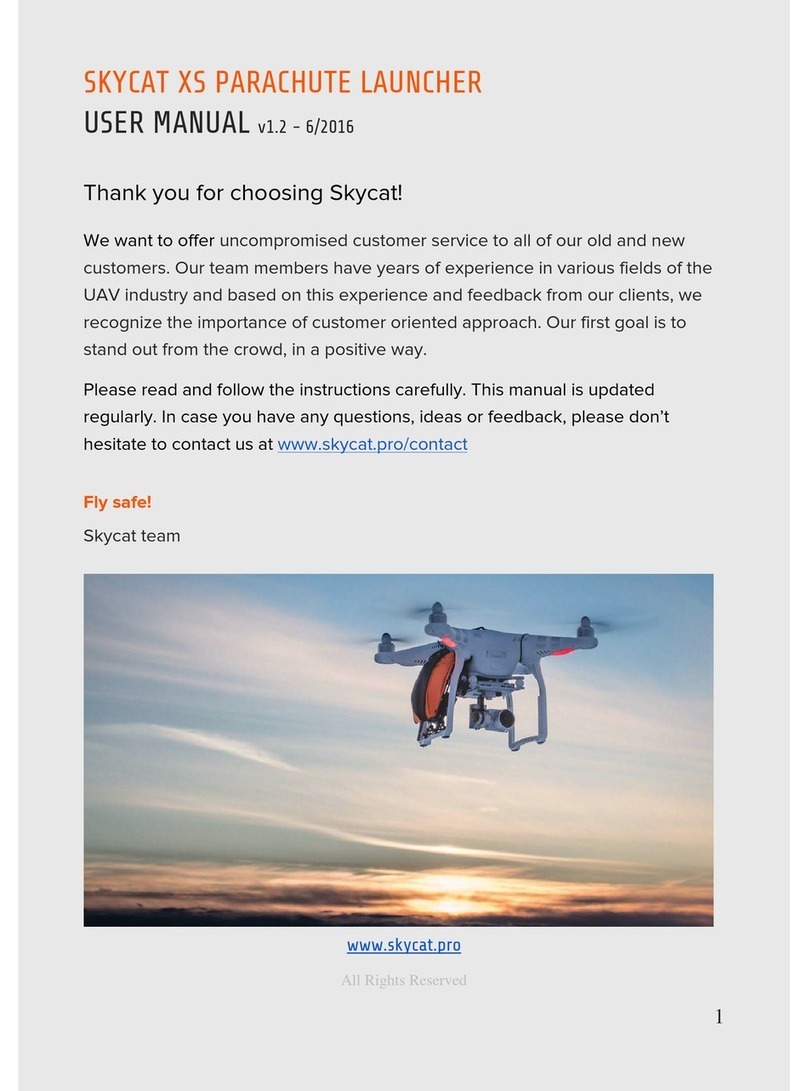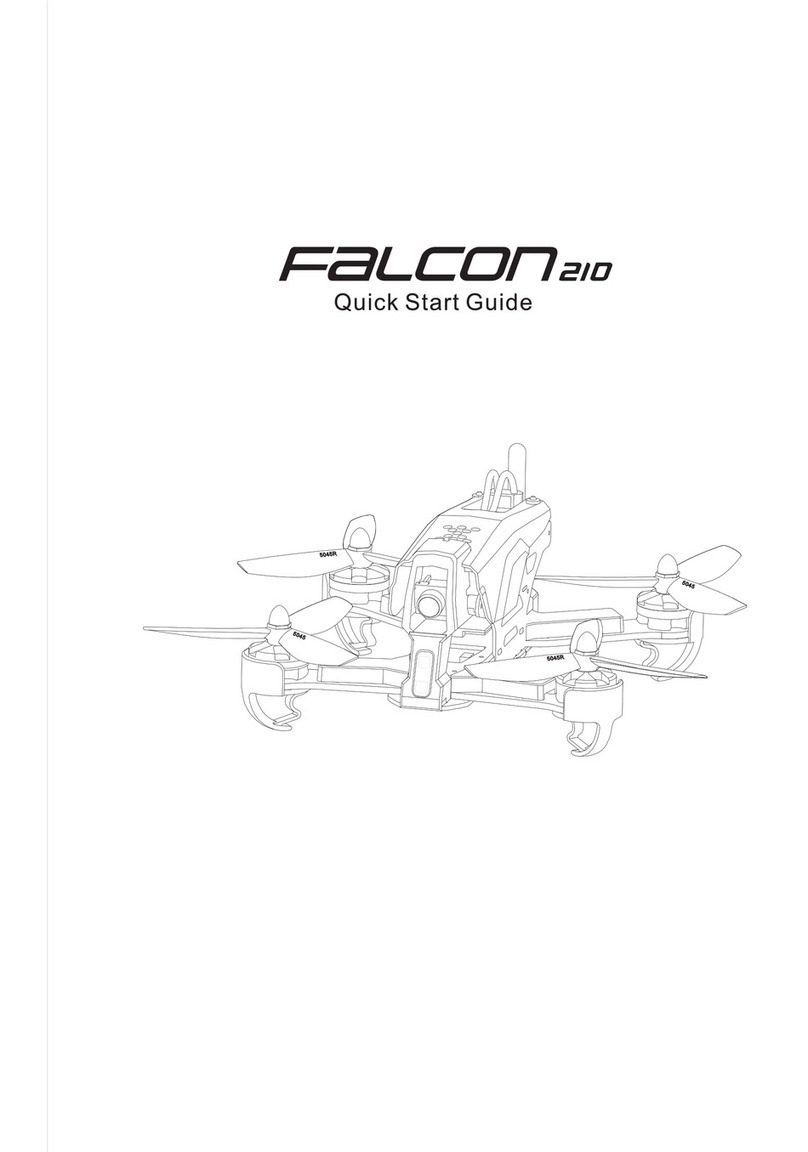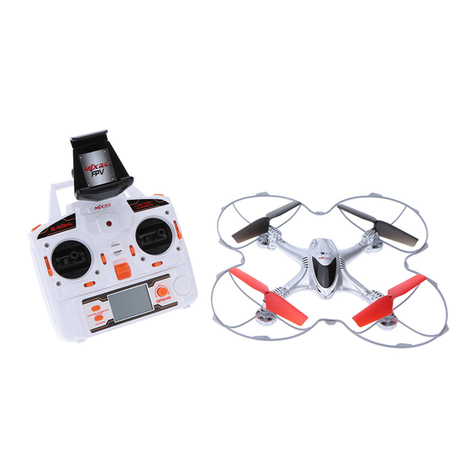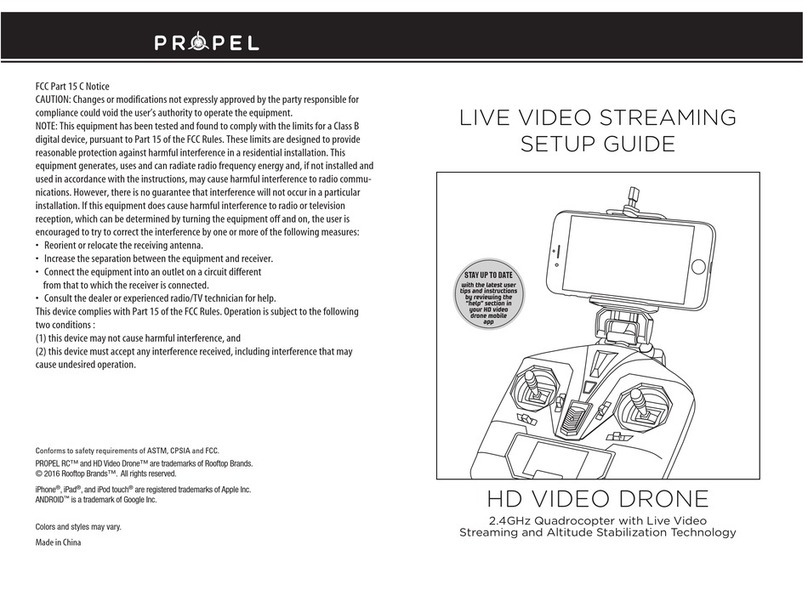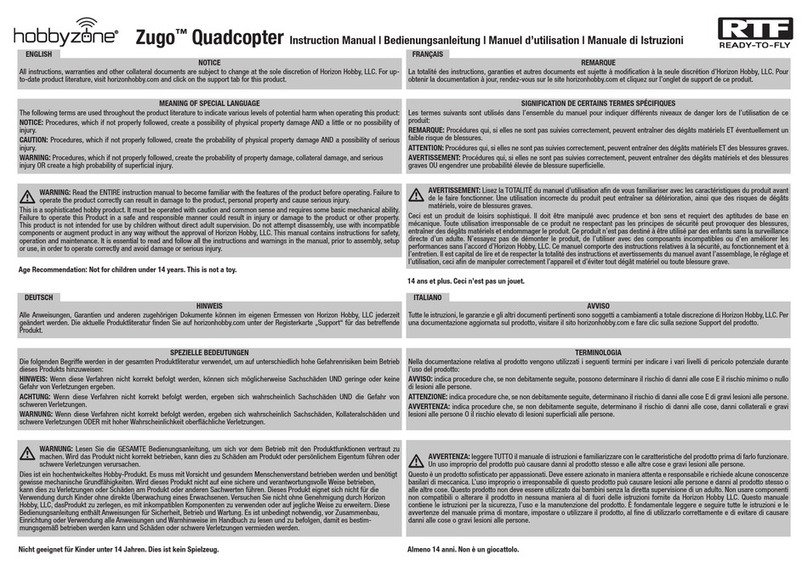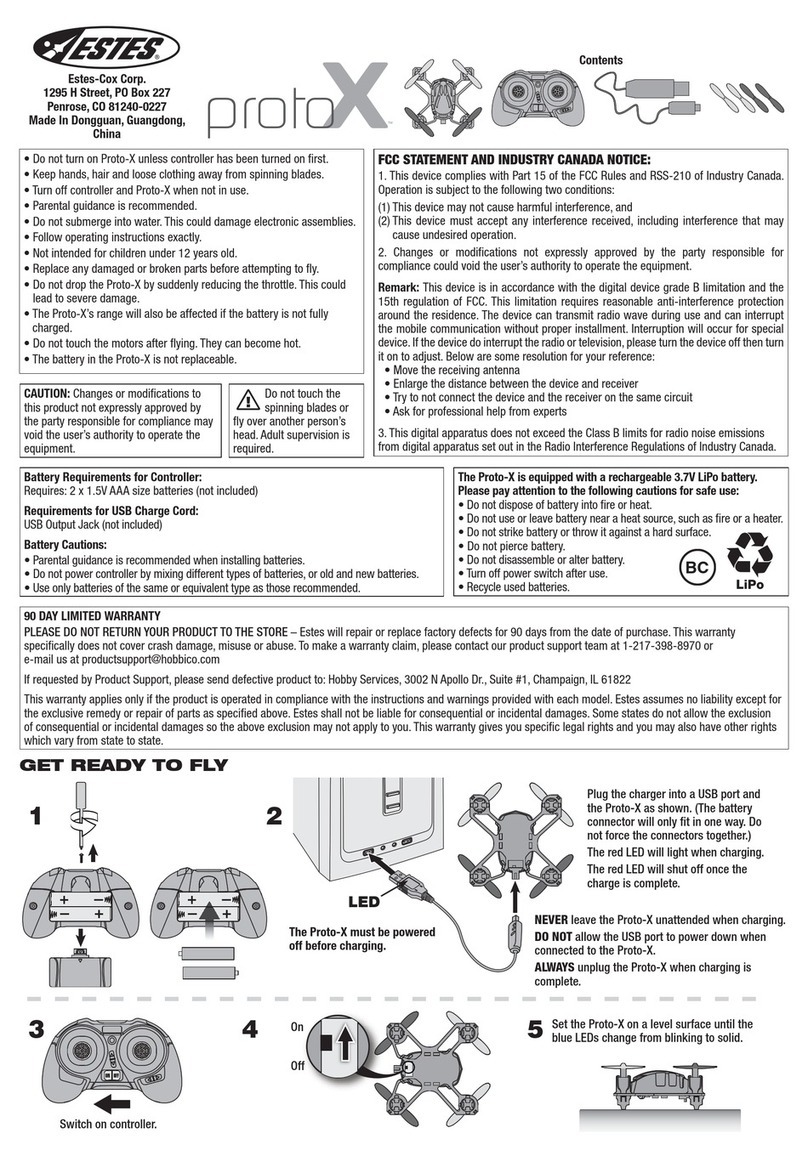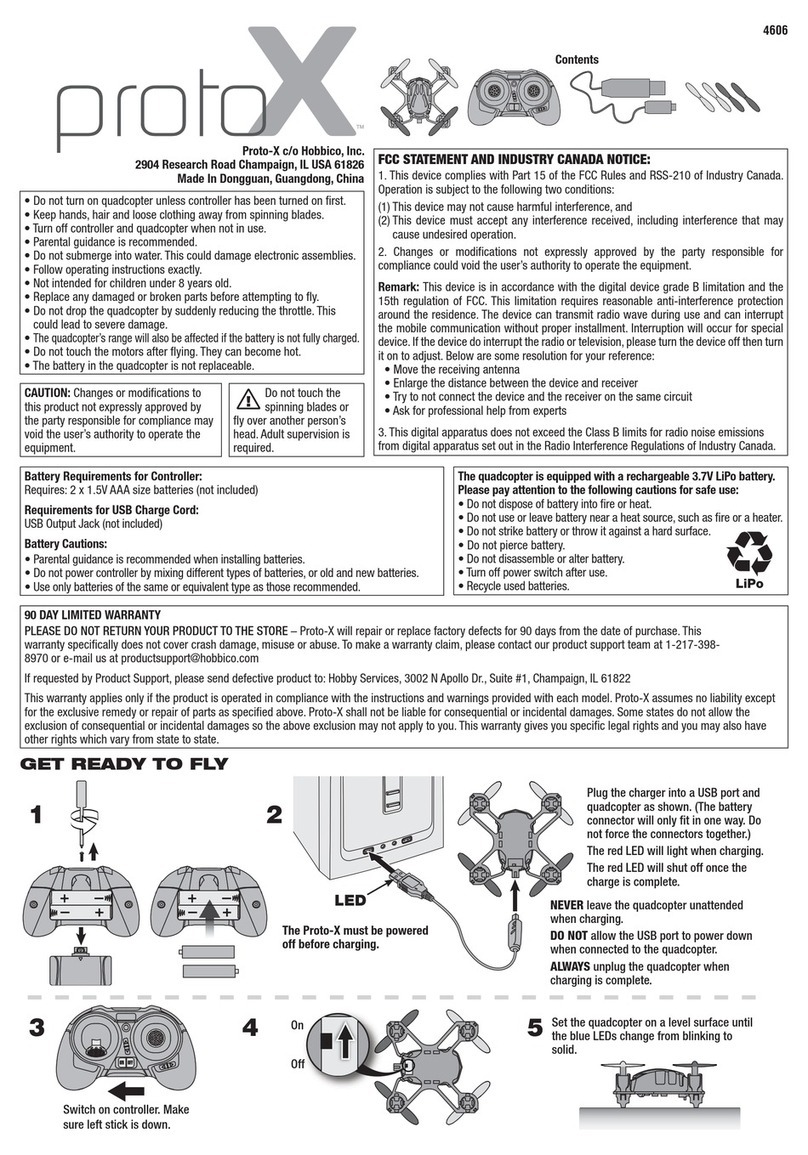
6
EN
Read the ENTIRE user manual to
become familiar with the features of
this product before operation. Failure to operate the product
as instructed by the user manual may result in damage to the
product or personal property and cause serious injury.
This is a sophisticated product. It must be operated with
caution and common sense and requires some basic
mechanical ability. Failure to operate this product in a safe
and responsible manner could result in injury or damage to
the product or other property. This product is not intended
for use by children. DO NOT use incompatible components
or alter this product in any way unless otherwise allowed by
relevant documents provided by SZ DJI TECHNOLOGY CO.,
LTD. These Safety Guidelines contain instructions for safety,
operation and maintenance. It is important to read and follow
all of the instructions and warnings in the user manual, prior to
assembly, setup or use, in order to operate the product safely
and avoid damage or serious injury.
Pre-ight Checklist
1. Ensure that you are using only genuine parts and that all parts are
in mint condition.
2. Ensure the remote controller, Intelligent Flight Battery, and mobile
device are fully charged.
3. Ensure that there is no foreign object stuck to the camera lens,
the Micro SD card has been inserted into the aircraft, and the
gimbal can rotate freely before powering it on.
4. Ensure the propellers and mounting plates are securely mounted
onto the motors, and the motors can start and function normally.
5. Follow the on-screen instructions to calibrate the compass.
6. Ensure the DJI GO 4 app and aircraft's firmware have been
upgraded to the latest version.
7. Ensure that your ight area is outside the NO Fly Zones and ight
conditions are suitable for ying the aircraft.
8. Be sure that you are NOT ying under the inuence of alcohol,
drugs or any substance that may impair your cognitive abilities.
9. Be familiar with the selected ight mode and understand all safety
functions and warnings.
10. Be sure to observe all local regulations, obtain appropriate
authorizations, and understand the risks. REMEMBER: It is solely
your responsibility to comply with all applicable regulations.
11. Please MAINTAIN VISUAL LINE OF SIGHT (WITH YOUR EYES)
OF YOUR AIRCRAFT AT ALL TIMES. Please DO NOT only rely
on rst person view camera to control your aircraft.
12. Ensure the DJI GO 4 app is properly launched to assist your
operation of the aircraft. Without the ight data recorded by the
DJI GO 4 app, in certain situations (including the loss of your
aircraft) DJITM may not be able to provide aftersales support to
you or assume liability.
Disclaimer and Warning
This product is NOT a toy and is not suitable for children under the
age of 18. Adults should keep the aircraft out of the reach of children
and exercise caution when operating this aircraft in the presence of
children.
While the product adopts advanced technology, inappropriate use
of the product could result in personal injury or property damages.
Please read the materials associated with the product before your
first use of the product. These documents are included in the
product package and are also available online on the DJI product
page at http://www.dji.com.
The information in this document affects your safety and your legal
rights and responsibilities. Read this entire document carefully to
ensure proper conguration before use. Failure to read and follow
the instructions and warnings in this document may result in product
loss, serious injury to you, or damage to your aircraft.
By using this product, you hereby signify that you have read this
disclaimer carefully and that you understand and agree to abide
by the terms and conditions herein. EXCEPT AS EXPRESSLY
PROVIDED IN DJI AFTER-SALES SERVICE POLICIES AVAILABLE
AT (HTTP://WWW.DJI.COM/SERVICE/POLICY), THE PRODUCT
AND ALL MATERIALS, AND CONTENT AVAILABLE THROUGH THE
PRODUCT ARE PROVIDED “AS IS” AND ON AN “AS AVAILABLE”
BASIS, WITHOUT WARRANTY OR CONDITION OF ANY KIND,
EITHER EXPRESS OR IMPLIED. DJI DISCLAIMS ALL WARRANTIES
OF ANY KIND, EXCEPT AS EXPRESSLY PROVIDED IN DJI AFTER-
SALES SERVICE POLICIES, WHETHER EXPRESS OR IMPLIED,
RELATING TO THE PRODUCT, PRODUCT ACCESSORIES, AND
ALL MATERIALS, INCLUDING: (A) ANY IMPLIED WARRANTY OF
MERCHANTABILITY, FITNESS FOR A PARTICULAR PURPOSE,
TITLE, QUIET ENJOYMENT, OR NON-INFRINGEMENT; AND
(B) ANY WARRANTY ARISING OUT OF COURSE OF DEALING,
USAGE, OR TRADE. DJI DOES NOT WARRANT, EXCEPT AS
EXPRESSLY PROVIDED IN DJI LIMITED WARRANTY, THAT THE
PRODUCT, PRODUCT ACCESSORIES, OR ANY PORTION OF THE
PRODUCT, OR ANY MATERIALS, WILL BE UNINTERRUPTED,
SECURE, OR FREE OF ERRORS, VIRUSES, OR OTHER HARMFUL
COMPONENTS, AND DO NOT WARRANT THAT ANY OF THOSE
ISSUES WILL BE CORRECTED.
NO ADVICE OR INFORMATION, WHETHER ORAL OR WRITTEN,
OBTAINED BY YOU FROM THE PRODUCT, PRODUCT
ACCESSORIES, OR ANY MATERIALS WILL CREATE ANY
WARRANTY REGARDING DJI OR THE PRODUCT THAT IS NOT
EXPRESSLY STATED IN THESE TERMS. YOU ASSUME ALL RISK
FOR ANY DAMAGE THAT MAY RESULT FROM YOUR USE OF OR
ACCESS TO THE PRODUCT, PRODUCT ACCESSORIES, AND ANY
MATERIALS. YOU UNDERSTAND AND AGREE THAT YOU USE THE
PRODUCT AT YOUR OWN DISCRETION AND RISK, AND THAT
YOU ARE SOLELY RESPONSIBLE FOR ANY PERSONAL INJURY,
DEATH, DAMAGE TO YOUR PROPERTY (INCLUDING YOUR
COMPUTER SYSTEM OR MOBILE DEVICE OR DJI HARDWARE
USED IN CONNECTION WITH THE PRODUCT) OR THIRD PARTY
PROPERTY, OR THE LOSS OF DATA THAT RESULTS FROM YOUR
USE OF OR INABILITY TO USE THE PRODUCT.
SOME JURISDICTIONS MAY PROHIBIT A DISCLAIMER OF
WARRANTIES AND YOU MAY HAVE OTHER RIGHTS THAT VARY
FROM JURISDICTION TO JURISDICTION.
DJI accepts no liability for damage, injury or any legal responsibility
incurred directly or indirectly from the use of this product. The user
shall observe safe and lawful practices including, but not limited to,
those set forth in these Safety Guidelines.
Data Storage and Usage
When you use our mobile app or our products or other software,
data regarding the use and operation of the product, such as ight
telemetry data (e.g., speed, altitude, battery life, and information
about the gimbal and camera) and operations records, may be
provided to DJI. The internal storage device incorporated into the
product stores various types of data, including ight telemetry data.
NOTICE
All instructions and other collateral documents are subject to change
at the sole discretion of SZ DJI TECHNOLOGY CO., LTD (“DJI”). For
up-to-date product information, visit http://www.dji.com and check on
the product page.
Glossary
The following terms are used throughout this document literature to
indicate various levels of potential harm when operating this product:
NOTICE: Procedures, which if not properly followed, create
a possibility of physical property damage AND a little or no possibility
of injury.
CAUTION: Procedures, which if not properly followed,
create the probability of physical property damage AND a possibility
of serious injury.
WARNING: Procedures, which if not properly followed,
create the probability of property damage, collateral damage, and
serious injury OR create a high probability of serious injury.
AGE RECOMMENDATION: NOT FOR CHILDREN UNDER THE AGE
OF 18. THIS IS NOT A TOY.
